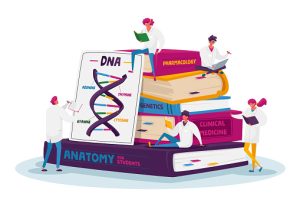Writing a Nursing Diagnosis
 WHAT IS A NURSING DIAGNOSIS?
WHAT IS A NURSING DIAGNOSIS?
A nursing diagnosis is a clinical judgment about individual, family, or community responses to actual or potential health problems/life processes. The nursing diagnosis provides the basis for selecting nursing interventions to achieve outcomes for which the nurse is accountable. An inference or conclusion drawn from data is a basis for planning nursing care.
Nursing Diagnosis is very important; you can get nursing diagnosis paper help from Studentshomeworks.com to get the best homework help money can offer
HOW TO WRITE A NURSING DIAGNOSIS

To write a nursing diagnosis;
- identify the problem, related factors, and defining characteristics. Then, use this information to formulate the nursing diagnosis statement.
- The nursing diagnosis statement consists of three parts: the nursing diagnosis (ND), related factors (RF), and defining characteristics (DC).
- The nursing diagnosis is a label that identifies the client’s problem. It is important to choose a clear, concise, and descriptive label.
The related factors are those factors that contribute to the client’s problem. They can be divided into three categories: etiological, predisposing, and reinforcing.
- Etiological-related factors are those that cause or trigger the problem.
- Predisposing-related factors are those that make the client susceptible to developing the problem.
- Reinforcing related factors are those that maintain or perpetuate the problem.
The defining characteristics are those signs and symptoms related to the nursing diagnosis. They help to describe the client’s problem further.
For a nurse to choose the proper nursing diagnosis, it is important to consider all of the information that has been gathered about the client, such as;
- client’s history
- physical examination
- laboratory and diagnostic tests
- other information from family members or other health care professionals.
Once all this information has been considered, a nursing diagnosis can be chosen that best describes the client’s problem.
Do you need Nursing research homework help? Click here to be redirected to Studentshomeworks.com for a custom research paper of your choice.
WHAT IS THE DIFFERENCE BETWEEN A MEDICAL AND A NURSING DIAGNOSIS?
A nursing diagnosis is different from a medical diagnosis in that it focuses on the patient’s response to their illness or injury. While a medical diagnosis focuses on the underlying cause of the problem, a nursing diagnosis focuses on how the patient copes with the problem and how students can use proper nursing interventions to help them.
WHAT ARE THE DIFFERENT TYPES OF NURSING DIAGNOSES?
There are three nursing diagnoses which include;
- Actual Nursing Diagnosis (related to current symptoms)
- Risk Nursing Diagnosis (predictive for future problems)
- Health Promotion Nursing Diagnosis (identifies patient strengths and areas for improvement)
WHAT IS AN ACTUAL NURSING DIAGNOSIS?
An actual nursing diagnosis is a statement about a patient’s current health status. It is based on symptoms the patient is experiencing and predictive factors for future problems. Actual nursing diagnoses always include an expected outcome of nursing care.
WHAT IS A RISK NURSING DIAGNOSIS?
A risk nursing diagnosis is a statement about a patient’s potential for developing a health problem in the future. It is based on symptoms the patient is experiencing and predictive factors for future problems. Risk nursing diagnoses always include an expected outcome of nursing care.
WHAT IS A WELLNESS-PROMOTING NURSING DIAGNOSIS?
A wellness nursing diagnosis is a statement about how to maintain or improve the patient’s current state of health. It is based on symptoms the patient is experiencing and predictive factors for future problems. Wellness nursing diagnoses always include an expected outcome of nursing care.
WHAT SHOULD BE INCLUDED IN A NURSING DIAGNOSIS?
A nursing diagnosis should include the following:
- A clear statement of the problem (also called the focus of care)
- Related factors that may contribute to the problem
- Signs and symptoms that are associated with the problem
- An expected outcome of nursing care
HOW IS A NURSING DIAGNOSIS DIFFERENT FROM A MEDICAL DIAGNOSIS?
A nursing diagnosis is different from a medical diagnosis in a few ways. First, a nurse makes a nursing diagnosis after completing a nursing assessment of the patient. Physicians typically make medical diagnoses after completing a physical examination and reviewing the patient’s medical history.
Second, nursing diagnoses are based on symptoms the patient is experiencing and predictive factors for future problems. Medical diagnoses are typically made based on laboratory test results and imaging studies.
Third, nursing diagnoses always include an expected outcome of nursing care. Medical diagnoses do not typically include an expected outcome of treatment.
WHAT ARE THE PURPOSES OF THE DIAGNOSIS?
Nursing diagnoses have different purposes, but all are based on the same fundamental information about the patient. If you understand the purpose of each type of nursing diagnosis, it will be easier to write an accurate and complete diagnosis for your patients.
The three primary nursing diagnoses are wellness, actual, and risk. Each primary nursing diagnosis has a purpose:
- Wellness nursing diagnoses are used to promote health and prevent illness. They focus on helping the patient maintain or improve their current state of health.
- Actual nursing diagnoses are used to identify problems that the patient is currently experiencing. These problems may be related to their physical health, mental health, or social situation.
- Risk nursing diagnoses identify predictive factors that may put the patient at risk for future problems. These factors may be related to their physical health, mental health, or social situation.
HOW DO YOU CHOOSE THE BEST NURSING DIAGNOSIS FOR YOUR PATIENT?
When choosing a nursing diagnosis for your patient, you must consider all the information you have gathered about them. It would be best to consider the patient’s goals and what they hope to achieve from treatment. Once you have considered all this information, you can choose the nursing diagnosis that best fits the patient’s needs.
HOW IS A NURSING DIAGNOSIS USED TO IMPROVE PATIENT CARE AND OUTCOMES?
Nursing diagnoses can improve patient care and outcomes in various ways. For example, nursing diagnoses can be used to develop patient individualized care plans. These care plans can guide nursing care and ensure patients receive the best care possible. Additionally, nursing diagnoses can be used to track patient progress and identify areas where improvement is needed. Using nursing diagnoses to improve patient care can help ensure that your patients receive the best possible outcomes.
WHAT RESOURCES CAN HELP NURSES LEARN MORE ABOUT NURSING DIAGNOSES?
Many resources are available to help nurses learn more about nursing diagnoses and their application in clinical practice. The American Nurses Association (ANA) offers a variety of resources on nursing diagnoses, including the ANA Nursing Diagnosis Handbook. Additionally, many nursing schools offer courses on the nursing diagnosis that can provide nurses with the knowledge and skills needed to use this important tool in clinical practice effectively. Finally, several professional organizations, such as the National League for Nursing (NLN), also offer resources on nursing diagnoses that nurses can use to improve their practice.
WHAT ARE THE STEPS TO TAKE WHILE PERFORMING A NURSING DIAGNOSIS?
Nurses use nursing diagnoses to promote positive patient outcomes by identifying health problems early and developing a plan of care to address those problems. Nursing diagnoses are based on the nursing process, a systematic approach to planning and providing nursing care. The nursing process includes assessment, diagnosis, planning, implementation, and evaluation. Using the nursing process, nurses can more effectively identify health problems and develop plans of care that are individualized to meet the needs of each patient.
- Assessment is the first step in the nursing process and involves gathering data about the patient’s physical condition, psychological state, and social circumstances. This data is used to identify health problems or potential health problems.
- Diagnosis is the second step in the nursing process and involves identifying the specific nursing diagnoses that apply to the patient based on the data collected during the assessment.
- Planning is the third step in the nursing process and involves developing a plan of care that will address the identified nursing diagnoses. A nurse should individualize the care plan to meet the patient’s needs based on best practices.
- Implementation is the fourth step in the nursing process and involves carrying out the care plan, which includes providing nursing interventions and therapies to address the patient’s health needs.
- Evaluation is the fifth and final step in the nursing process and involves assessing whether the nursing intervention effectively addresses the patient’s health needs. If it is not effective, the nursing intervention is modified or discontinued.
A nursing process is an important tool that a nurse can use to provide high-quality care to patients. Nurses must understand the nursing process well to care for their patients effectively.
WHAT CHALLENGES DO NURSES FACE WHEN USING NURSING DIAGNOSES IN THEIR PRACTICE, AND HOW CAN THESE BE OVERCOME?
One of the challenges that nurses face when using nursing diagnoses is ensuring they are using the most current and accurate information. Nursing diagnoses can change over time as new research is conducted and new knowledge is gained. Nurses must keep up to date with the latest nursing diagnosis information to provide the best possible care to their patients.
Another challenge nurses face when using nursing diagnoses is ensuring that all healthcare team members are aware of the nursing diagnosis and agree upon its use. Nurses need to communicate effectively with other healthcare team members so that everyone is on the same page and working towards the same goal. If nurses are aware of these challenges and take steps to overcome them, nursing diagnoses can be an extremely valuable tool in the nursing profession. One of the main benefits of nursing diagnoses is that they help nurses target care specifically to the individual needs of their patients.
Nursing diagnoses are not one size fits all and can be tailored to meet each patient’s specific needs to help ensure that patients receive the most effective care possible. Nurses can also use nursing diagnoses to track their patient’s progress over time. A nurse can then use this information to modify the care plan as needed to achieve the best results for the patient. Nursing diagnoses are also valuable for educating nurses on how best to care for their patients. Nurses can learn the most effective ways to treat and prevent various health conditions by using nursing diagnoses. A student can then share this information with other nurses, which can help improve the quality of care patients receive.
Get a nursing diagnosis guide and online nursing homework assignments help from Studentshomeworks.com[icon_bar icon=”icon-lamp” link=”” target=”_blank” size=”” social=””]
Do you need a similar assignment done for you from scratch? We have qualified writers to help you. We assure you an A+ quality paper that is free from plagiarism. Order now for an Amazing Discount!
Use Discount Code "Newclient" for a 15% Discount!
NB: We do not resell papers. Upon ordering, we do an original paper exclusively for you.





